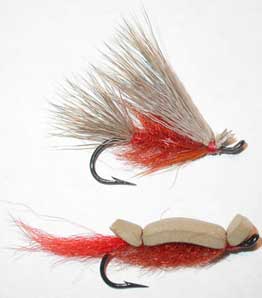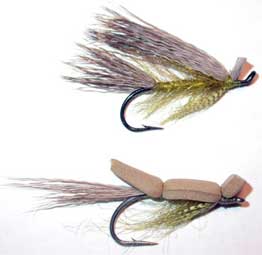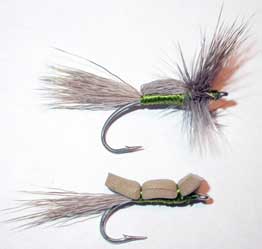by Mark Gustavson
| Dry Fly Conversions for Stripers
|
|
| With the success of taking stripers with a few steelhead dry flies last season I am addressing how to better adapt them to the saltwater environment. While fishing these flies I found that if the current was too slow, the fly would slowly sink and at times I would be snagging the bottom in three feet of water. The deer hair becomes waterlogged and the silicon I applied to it wears off. It is not a problem in stronger current (2-3 knots).I found with both the bomber and other spun deer hair flys that I was greasing them on every cast and that becomes tedious after a couple of hours.
Actually, I had anticipated this before tying them. But I wanted to fish the originals and catch stripers with them and I did throughout the summer. Now I have substituted closed-cell foam for spun deer hair. I chose to use a neutral tan color that closely matches natural deer hair. I think that this dull color almost disappears in the water and the body color and in some cases tail color stands out. Let's look at the conversions.  Here is a Grease Liner with a burnt orange body. I have replaced the deer hair tail and wing with tan foam and added a hot orange calftail tail and used burnt orange seal for the body. It's a great looking cinder worm. The up turned lip is retained in the foam versions to create a nice "V" wake as with the original. |
The Olive Grease Liner suggests a floating grass shrimp. Again the wing
is substituted with foam but I kept the deer hair tail as antennae. The body is brown olive seal with an olive dyed mallard flank throat. The Humpy worked in the worst weather conditions while no one else
was catching. Unfortunately, and again, unless the current is moving well the Humpy will get waterlogged and sink. I have replaced the “hump” and wing with tan foam but kept natural deer hair tail (grass shrimp antennae) and the olive floss body.  © 2006 by Mark Gustavson | |
[ Stories & Essays ] |
||

